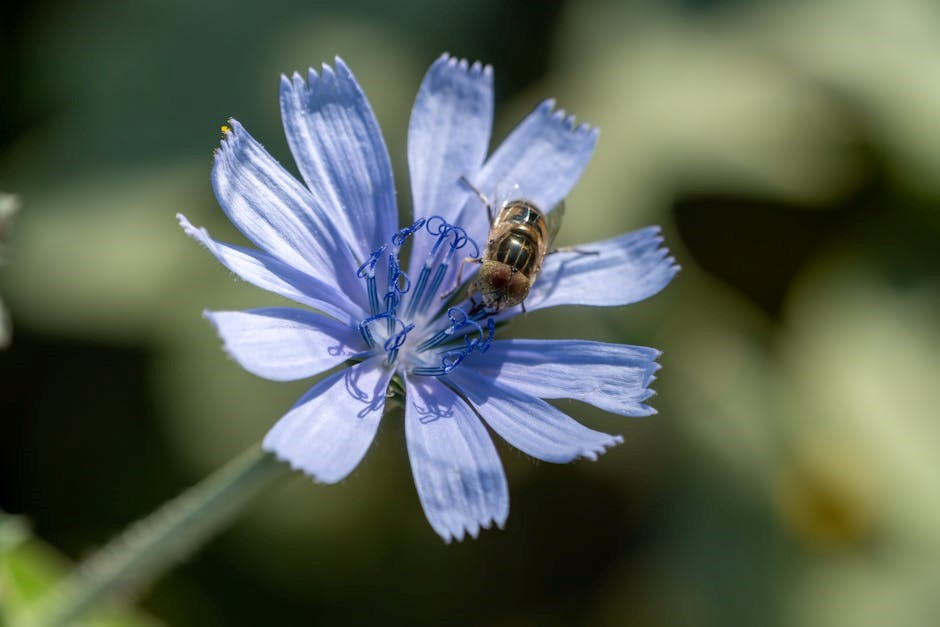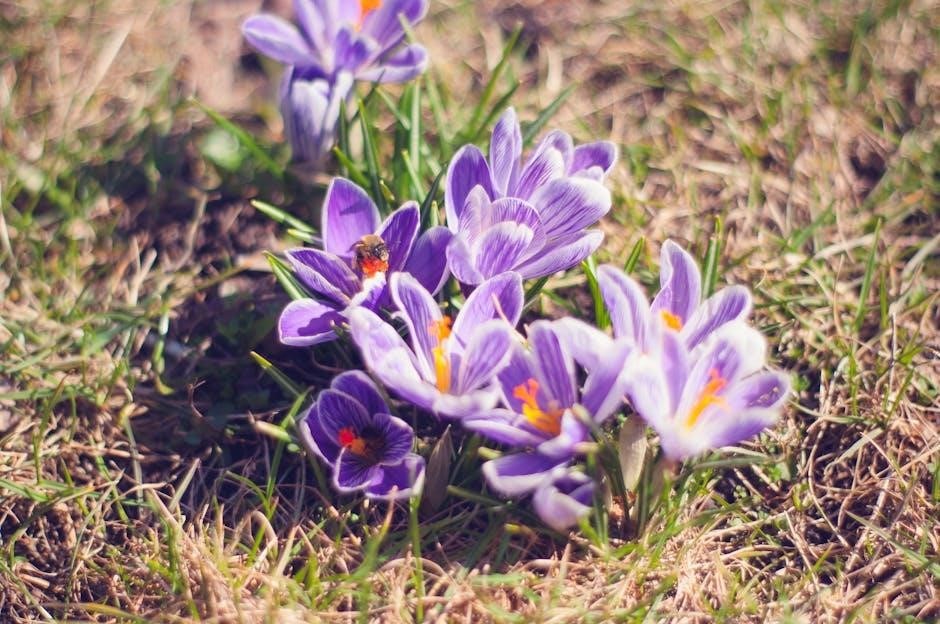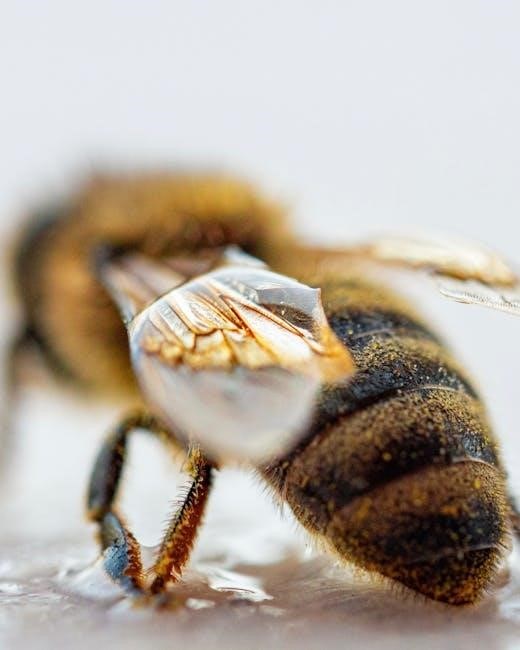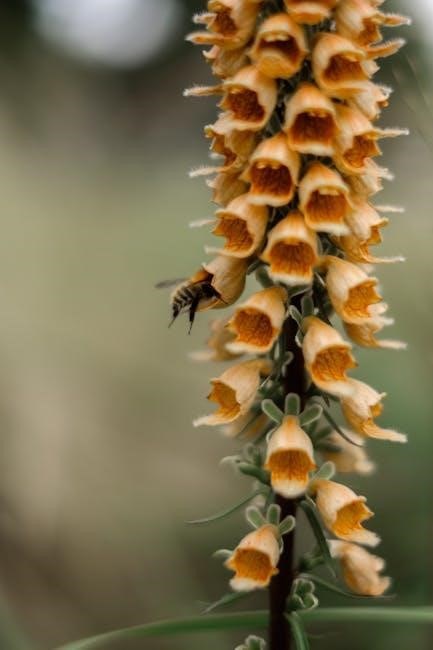The honey bee life cycle is a complex process involving multiple stages‚ beginning with the egg stage‚ as noted in various online resources and articles․
Definition and Overview
A honey bee is a type of flying insect that belongs to the genus Apis‚ with a distinct life cycle‚ as found in various online resources and articles on the topic of honey bee life cycle pdf․ The life cycle of a honey bee is a complex process that involves multiple stages of development‚ from egg to adult․ According to online information‚ a honey bee’s life cycle is typically divided into four stages: egg‚ larva‚ pupa‚ and adult․ This process is crucial for the survival and growth of honey bee colonies‚ and understanding it is essential for beekeepers and researchers․ The definition and overview of the honey bee life cycle are essential for understanding the biology and behavior of these important insects‚ and their role in pollination and ecosystem health․ Various online resources provide detailed information on this topic․

History of Honey Bees
Honey bees originated in Eurasia‚ with a rich history documented online and in various articles about honey bee life cycle pdf naturally․
Importance of Honey Bees
The importance of honey bees is a topic of great interest‚ with many online resources and articles discussing their role in pollination and ecosystem health‚ as seen in honey bee life cycle pdf․ Honey bees play a crucial role in maintaining the balance of nature‚ and their importance cannot be overstated․ They are responsible for pollinating many plant species‚ including crops and flowers‚ and their loss could have significant consequences for the environment․ Many organizations and individuals are working to protect and conserve honey bee populations‚ recognizing the vital importance of these insects to our planet’s ecosystem and food supply‚ as discussed in various online forums and articles about honey bee life cycle pdf․

Life Cycle of a Honey Bee
Honey bees undergo a complex life cycle involving growth and development stages‚ as outlined in various online resources and pdf documents always available․
Stages of Development
The stages of development in the honey bee life cycle are complex and involve various physiological changes․
The honey bee life cycle consists of four main stages: egg‚ larva‚ pupa‚ and adult‚ as noted in various online resources and pdf documents․
Each stage has distinct characteristics and plays a crucial role in the development of the honey bee․
The duration of each stage varies‚ with the egg stage lasting around three days‚ and the larval stage lasting around five days․
The pupal stage is the longest‚ lasting around seven days‚ during which the bee undergoes significant transformation․
Understanding these stages is essential for managing honey bee colonies and promoting healthy development․
The stages of development are intricately linked‚ and any disruption can have significant impacts on the colony’s overall health and productivity․

Characteristics of Each Stage
Distinct physical and behavioral traits emerge during each stage of honey bee development slowly․
Egg Stage
The egg stage is the initial phase of the honey bee life cycle‚ typically lasting three days․
During this stage‚ the queen bee lays eggs in empty cells within the honeycomb‚ with the cell type determining the bee’s future role․
The eggs are extremely small‚ and their development is influenced by factors such as nutrition and environmental conditions․
The egg stage is a critical period‚ as it sets the foundation for the bee’s future growth and development․
Proper care and nutrition during this stage are essential for the bee’s survival and success․
The egg stage is a fascinating and complex process that is still being studied by scientists and beekeepers today to improve bee health․

Community Support for Honey Bees
Local communities help maintain honey bee populations through support networks and initiatives always․
Commitment to Nurture and Maintain
The commitment to nurture and maintain honey bee populations is crucial for their survival‚ involving a community-centred network to support individuals and groups‚ as seen online․
This network is necessary to support the individuals and groups who want bees in their locality‚ including all types of bees‚ such as honeybees and social stingless bees․
The goal is to create a supportive environment that allows honey bees to thrive‚ and this requires a collective effort from the community‚ with a focus on education and awareness about the importance of honey bees․
By working together‚ we can help maintain healthy honey bee populations and ensure their survival for generations to come‚ which is essential for the ecosystem and our food supply․
Life Stages of a Worker Honey Bee
Worker honey bees have distinct life stages‚ including egg‚ larva‚ and pupa‚ which are crucial for their development and growth naturally online․
Developmental Process
The developmental process of a worker honey bee is complex and involves various stages․
The entire process from egg to adult takes around 21 days to complete․
During this time‚ the bee undergoes significant changes and developments․
The process begins with the egg stage‚ followed by the larval stage‚ and finally the pupal stage․
Each stage is crucial for the growth and development of the bee․
The developmental process is influenced by various factors‚ including nutrition and environmental conditions․
Proper nutrition and care are essential for the healthy development of the bee․
The developmental process is a critical component of the honey bee life cycle‚ and understanding it is essential for beekeeping and maintenance․
It is a highly organized and regulated process that ensures the survival and success of the colony․
Understanding the honey bee life cycle is essential for conservation and maintenance purposes always online․
Importance of Understanding the Life Cycle
Understanding the life cycle of honey bees is crucial for their conservation and maintenance‚ as noted in various online resources and articles‚ including honey bee life cycle pdf․ The life cycle of honey bees is complex and involves multiple stages‚ from egg to adult․ By understanding these stages‚ beekeepers and researchers can better manage and protect honey bee populations․ This knowledge is essential for maintaining healthy colonies and preventing diseases․ Additionally‚ understanding the life cycle of honey bees can help inform strategies for protecting and preserving these important pollinators‚ which are vital to ecosystems and food production‚ as discussed in online forums and research papers‚ including those on honey bee life cycle pdf‚ available online․